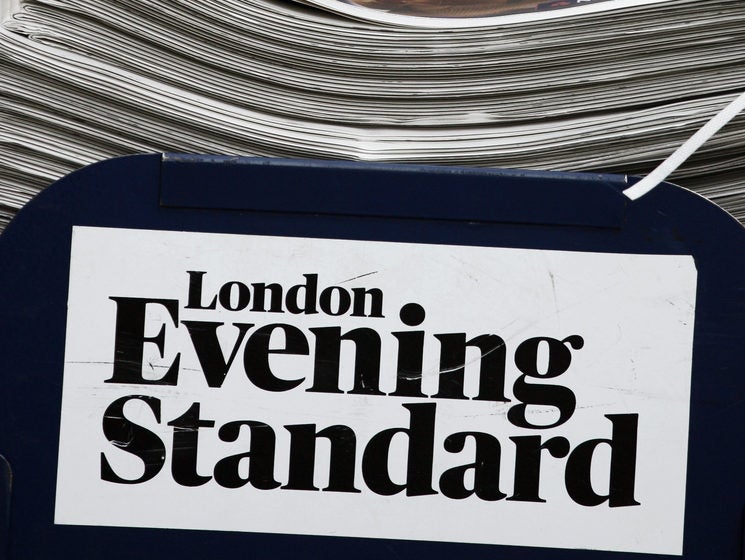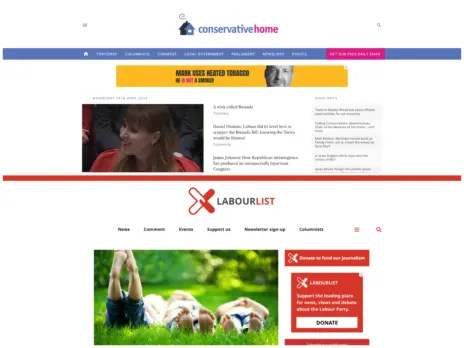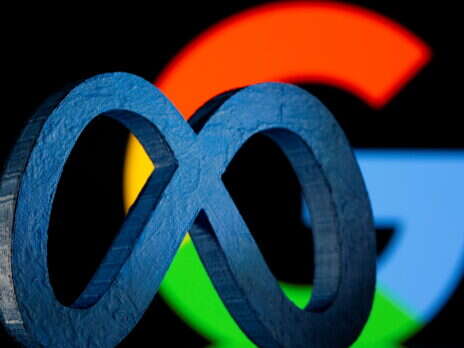
When I was chief sub-editor of an evening newspaper in the 1980s I knew that I had to change my job. After all, the writing was on the wall. Everybody was telling me that newspapers were dead and the future was computers. I had a baby boy and a mortgage to support. I had to act.
Journalist friends were going into radio, television or the dreaded PR. I’d already been turned down by the Today programme; I didn’t fancy television; so I applied for a press officer position with a computing company.
I spotted a job offering a salary I could only aspire to in newspapers and was offered the position. I only then asked what I would actually be doing.
I should have known: my role would be to get nice things said about the company in newspapers!
Not for the first or last time during my 40 years in the publishing game, I realised that editorial is king, and that newspapers are the kingdom. So, I stayed in that land and honed my skills for the circulation wars and battles for the public’s attention that lay ahead.
OK, the battlefield has dramatically altered and newspaper folk have learned, albeit slowly, a few tricks on how to fight clever and sometimes change sides. Even those with ink in their blood couldn’t ignore the advance of technology and red balance sheets.
One thing that has not altered though is that the holy grail for PR agencies is to get the positive attention of newspapers for their clients. If they can’t get a journalist to write favourably about their products or profile, they will pay enormous sums to get the prime advertising spot in print to get their message to the public.
Why? Surely it is madness to pay multiples of the cost of an online campaign to appear in dead-tree media. Not so. Despite prophecies to the contrary over the decades, those who make the ultimate choice (the public) continue to turn to print for crucial aspects of their lives. And large and influential numbers continue to choose newspapers and magazines as their information platform of choice.
This past year has reinforced this fact. When big decisions need to be made and one needs an inside track (as during the referendum debate), when you want to trust somebody who knows what is really going on (like when the Prime Minister resigns followed by most of the cabinet), when you want to share the celebrations of an amazing run of triumphs (such as the UK team sweeping the board at the Rio Olympics), people turn to their trusted publisher. For many it will be a newspaper although, numerically, for more it will be a digital platform but still with a well-known and respected brand.

Readers have shown through the years what they want above all else: that’s news. It might be the latest on entertainment, sport, business or travel…but it’s news that is the driver.
It is argued that ever-smarter phones and 4G speeds are today satisfying that appetite, and that newspapers are in a death spin. Really? If this was so surely it would be in London with a youthful multi-cultural, celebrity-focused, technically-obsessed, business-orientated society. Not so. There are now more newspapers read in London than ever before.
Let’s take the case of the Evening Standard which has proven that if a publisher adapts to today’s world then the soothsayers have got it all so wrong when they proclaim the end of the print world is nigh.
It always helps to put things in an historic context. In November 1990 when the Tory party was facing a previous leadership crisis, the Evening Standard was publishing an average of just over 500,000 copies a day. On the day in November 1990 Margaret Thatcher resigned it shot up to 821,000 copies.
Let’s roll on 26 years to the referendum on June 23, 2016. The average daily pick up of the Evening Standard for the week following the vote was 965,000 copies. The highest ever figure for the Evening Standard was the edition carrying the 2005 General Election result: 996,000 copies.
A flash in the pan? No. The average pick up of the Evening Standard for normal working days during the year to the end of September 2016 was 900,000 copies. It is heartening to see that people still turn to their newspapers as well as their smart phones. This, they certainly do. The Evening Standard is now read across all platforms (phone, web and apps) by 11,959,000 a month (source NRS PADD July 15).
The lessons of history
So how did the Evening Standard prove wrong the talk of the death of newspapers being inevitable?
For this it is worth going back to the Standard’s roots.
The Standard was first published in 1827 when even then there were circulations wars and newspaper closures. The Morning Journal closed in 1830 but by the 1850s the Standard found it more difficult to compete with a strong rival called The Morning Herald. So the Standard halved its cover price from two pennies to one!
Sales soared and the circulation of the three-penny The Morning Herald fell away. The Standard held its price at one penny for almost 100 years.
As shown by the readership boost from the European referendum result to Margaret Thatcher’s resignation, big political stories have always seen readers turn to their newspaper. A canter through the circulation figures of recent history does though at the same time reflect the decline of sales of the traditional paid-for newspaper.
From the heady days of regular sales between 500,000 and 600,000, by the late 1990s it was down to the 400,000s. In 1997, Tony Blair’s Labour landslide victory had 679,000 Londoners buying their Evening Standard, 240,000 more than the normal daily sale.
But during the following decade the Standard faced more and more competition with the Metro in the morning and the rise of the internet and the growth of smart phones.
There were, though, still the huge stories – and none bigger than that on September 11, 2001.
On 9/11, the TV news film of the planes crashing into the Twin Towers shocked the most hardened of journalists in the Standard’s newsroom. It was early afternoon and the Standard had already printed large numbers of its papers.
The presses were changed up with the awful and dramatic pictures and story and kept rolling, and a total of 532,000 copies were sold. The following day, when the Standard could print earlier, the sale was 708,000, some 300,000 copies greater than the average sale of the previous week.
As the decade went by competition for the Standard became tougher. Rupert Murdoch came on the scene in 2006 with the launch of the free TheLondonpaper, pumping out 500,000 copies a day.
Associated Newspapers, then owner of the Evening Standard, launched the free newspaper LondonLite. This was another 400,000 copies given free to Londoners. The Standard’s circulation was under pressure.
The toughest of markets
Even when there were huge London stories that broke during the day, the Standard’s sale couldn’t get to its old heights.
In July 2005, London Wins The Olympics managed 434,000 copies and London Bombings sold 416,000. The average sale for that month was 350,000. The trend continued. In February 2009, the ABC figure was 278,000 copies, just 149,000 of these fully paid.
Now, let’s remind ourselves, today the (free) pick-up figure is 900,000. That’s a readership of more than 1.7m. How has the Standard achieved this when nearly all other newspapers have seen dramatic falls in their circulation?
The continuing success of the Metro demonstrated that there was a market for a free newspaper in the morning. However, the expensive failed venture of News Corporation with TheLondonpaper had shown that the afternoon market was tough; at that time the Evening Standard was losing tens of millions of pounds a year.
In what has become newspaper folklore, the Evening Standard was in 2009 bought from Lord Rothermere’s Associated Newspapers by Alexander Lebedev, a former KGB officer.
So what did the new company do to bring about such a transformation? Was it a Russian revolution?
No. As all of London now knows, it was something far more shocking: the Standard went free, but the real revolution was that it broke all the old rules and did what nobody expected – it remained a quality newspaper.
Overnight, Londoners were given copies of exactly the same type of newspaper for which they had previously paid 50p a copy.
The Standard retained its pagination; its news and picture desks with exclusives and expert reporting on breaking news; its columnists; its city section with highly-acclaimed writers and analysts; its sports coverage with international dispatches from correspondents; its revered arts critics. All given to readers for free.
Not just to the readers who were buying less than 200,000 copies a day but, initially, three times as many readers.
The business model was fundamentally redrawn. A year earlier, the Standard had been distributed through 8,000 outlets from Bournemouth to Cambridge, from Milton Keynes to Southend.
The new operation distributed three times as many papers through one-tenth of the original number of outlets. The distribution was contained within the North and South Circular Roads, with the focus on hand distribution by franchisers in the central zones served by the busiest tube stations.
Proving the doubters wrong
The new editor in 2009, Geordie Greig, with the backing of publishers Alexander and Evgeny Lebedev proved the doubters wrong. The editorial team continued to set the agenda, including major campaigns that highlighted and brought about change over serious social issues including the Dispossessed, those who were falling out of society losing out in housing, employment and education.
A growing loyal readership followed and within a year the print run was increased to 700,000 copies a day. Under the new editor Sarah Sands, who was promoted from deputy editor, the growth continued. At the beginning of 2015, the print figure was increased to more than 900,000.
Where 7,000 copies were in September 2009 sold at Liverpool Street and nearby stations, 68,000 copies are now picked up by readers. In Victoria and Westeminster it was 5,000 copies, it is now 32,000. In Waterloo and Southwark, it has risen from 7,000 to 38,000.
Advertising at a higher yield has matched the circulation growth and Evening Standard Ltd has gone into the black in recent years after more than a decade of losses.
Talk of newspapers being at the end of their era is missing the very thing that attracts journalists into the business: an excitement and desire to tell the story to everybody.
The world of publishing has never been easy, journalism has never been comfortable. The scoops go to the journalists who can read the signs of a developing story, think on their feet and react quickly.
It was a battle for the Evening Standard when it launched in 1827. It is the same for today’s industry leaders now whether they are publishing on paper or digitally. The brave and the brilliant will survive – whatever the platform.
Doug Wills is Managing Editor of the London Evening Standard and The Independent. He began his career as a trainee reporter with Thomson Regional Newspapers and held a number of positions in the provincial press, including deputy editor. He moved to London in 1986 at the time Robert Maxwell was launching the short-lived London Daily News and the London newspaper market was as competitive as it is today.
This is an extract from Last Words? How Can Journalism Survive the Decline of Print? Edited by John Mair, Tor Clark, Neil Fowler, Raymond Snoddy and Richard Tait Abramis Academic Publishing Bury St Edmunds £19.95. January 2017. Available at special pre-publication price of £15 to Press Gazette readers from Richard@abramis.co.uk
Email pged@pressgazette.co.uk to point out mistakes, provide story tips or send in a letter for publication on our "Letters Page" blog






